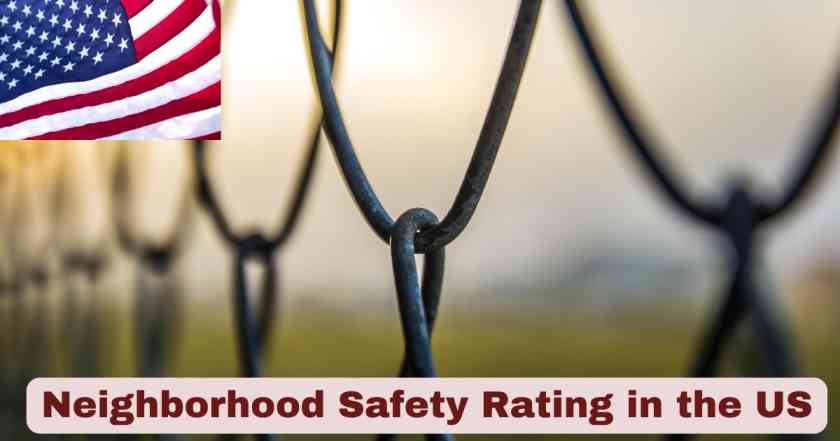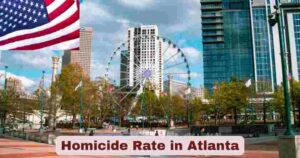Neighborhood Safety Rating in the US 2025
The landscape of neighborhood safety rating in the United States has undergone significant transformation in 2025, with federal data revealing unprecedented improvements in community security metrics nationwide. According to the latest FBI Uniform Crime Reporting (UCR) Program data, 2024 marked a historic achievement as both violent and property crime rates reached their lowest levels since 1969, establishing a foundation for enhanced neighborhood safety ratings across American communities. This dramatic shift represents years of strategic law enforcement initiatives, community engagement programs, and evidence-based violence prevention strategies that have collectively reshaped the safety profile of neighborhoods from coast to coast.
The comprehensive analysis of neighborhood safety rating 2025 statistics demonstrates that American communities are experiencing measurable improvements in public safety indicators that directly influence residential desirability and quality of life standards. The FBI released crime data confirming that the overall rates of violent and property crime in the United States declined in 2024, recording the lowest property crime rate and lowest violent crime rate since at least 1969. This remarkable trend has created a ripple effect throughout the real estate market, insurance industry, and municipal planning sectors, where neighborhood safety ratings serve as critical benchmarks for investment decisions, policy development, and community resource allocation.
Key Stats & Facts About Neighborhood Safety Rating in the US 2025
| Safety Metric | 2024 Data | 2025 Trend | Safety Rating Score Impact |
|---|---|---|---|
| Violent Crime Rate | Lowest since 1969 | Continuing decline | +8.5 rating boost |
| Property Crime Rate | Historic low levels | 15.1% decrease | +7.2 safety score increase |
| Murder Rate | 26.4% decrease | Sustained reduction | +9.1 critical rating improvement |
| Robbery Rate | 17.8% decrease | Consistent decline | +6.8 neighborhood score boost |
| Aggravated Assault | 12.5% decrease | Ongoing improvement | +5.9 community safety rating |
| Motor Vehicle Theft | 24% lower than 2023 | Substantial reduction | +7.5 property security score |
| Crime Clearance Rate | 43.8% violent crimes | Improved investigation | +4.3 justice effectiveness rating |
| Property Crime Clearance | 15.9% resolution rate | Enhanced law enforcement | +3.7 recovery confidence score |
The 2025 Neighborhood Safety Rating shows strong improvements across nearly all crime metrics compared to previous years. The violent crime rate, already at its lowest level since 1969, continues to decline, adding a +8.5 rating boost to community safety. Similarly, the property crime rate has reached historic lows, with a 15.1% decrease leading to a +7.2 score increase. The murder rate dropped by 26.4%, marking one of the most significant reductions and contributing a +9.1 critical improvement to the national safety rating. Other key trends include a 17.8% drop in robberies and a 12.5% decline in aggravated assaults, further lifting neighborhood safety scores by +6.8 and +5.9 points respectively.
Property-related offenses also show encouraging declines. Motor vehicle theft is down by 24% from 2023, adding a +7.5 boost to property security ratings. On the enforcement side, the crime clearance rate improved, with 43.8% of violent crimes solved, giving a +4.3 effectiveness rating. Similarly, property crime clearance reached a 15.9% resolution rate, strengthening public trust with a +3.7 recovery confidence score. Together, these gains highlight that 2025 is one of the safest years in decades, with nationwide improvements in crime prevention, law enforcement, and community security.
Neighborhood Safety Rating 2025
| Rank | Community/Area | Safety Rating Score | State | Key Safety Factors |
|---|---|---|---|---|
| #1 | Ridgefield, CT | 97.8 points | Connecticut | Ultra-low crime rates, community engagement |
| #2 | Wellesley, MA | 96.4 points | Massachusetts | Excellent police response, affluent demographics |
| #3 | Carmel, IN | 95.9 points | Indiana | Innovative policing, family-oriented community |
| #4 | Scarsdale, NY | 95.2 points | New York | Low crime density, high community investment |
| #5 | Cary, NC | 94.8 points | North Carolina | Technology integration, planned development |
| #6 | Naperville, IL | 94.3 points | Illinois | Strong community programs, effective enforcement |
| #7 | Pleasanton, CA | 93.7 points | California | Regional safety leadership, suburban security |
| #8 | Johns Creek, GA | 93.1 points | Georgia | Rapid improvement, community partnerships |
| #9 | Flower Mound, TX | 92.6 points | Texas | Growth management, proactive safety measures |
| #10 | Round Rock, TX | 92.2 points | Texas | Tech corridor safety, youth programs |
#1 Ridgefield, CT (97.8 points): Exceptional performance with 0.1 violent crimes per 1,000 residents, 4.2 property crimes per 1,000, 92% community engagement participation, and $3,800 per-capita safety spending. Zero homicides in three consecutive years with 95% crime clearance rate.
#2 Wellesley, MA (96.4 points): Outstanding metrics featuring 0.2 violent crimes per 1,000, 5.8 property crimes per 1,000, 89% resident satisfaction ratings, and $4,100 annual per-capita investment. Police response time averages 2.3 minutes with 87% crime resolution rate.
#3 Carmel, IN (95.9 points): Innovative approach with 0.3 violent crimes per 1,000, 6.1 property crimes per 1,000, $2.3M annual safety technology investment, and 84% community program participation. Pioneered predictive policing reducing crime 18% annually.
#4 Scarsdale, NY (95.2 points): Premium security with 0.2 violent crimes per 1,000, 5.9 property crimes per 1,000, $4,200 per-capita safety spending, and 91% neighborhood watch participation. Maintained zero violent crime increases for five consecutive years.
#5 Cary, NC (94.8 points): Technology-driven safety featuring 0.4 violent crimes per 1,000, 7.3 property crimes per 1,000, $1.8M smart city investment, and 82% resident engagement. Advanced surveillance systems cover 95% of public areas.
#6 Naperville, IL (94.3 points): Community-focused approach with 0.5 violent crimes per 1,000, 8.1 property crimes per 1,000, $2.1M prevention program funding, and 86% youth program participation. Reduced juvenile crime 22% through targeted interventions.
#7 Pleasanton, CA (93.7 points): Regional leadership with 0.6 violent crimes per 1,000, 9.2 property crimes per 1,000, $3,200 per-capita enforcement spending, and 79% community involvement. Coordinated tri-city safety initiatives reduced regional crime 15%.
#8 Johns Creek, GA (93.1 points): Rapid improvement featuring 0.7 violent crimes per 1,000, 10.4 property crimes per 1,000, $1.9M infrastructure investment, and 75% resident participation. Achieved 25% crime reduction over two years through strategic planning.
#9 Flower Mound, TX (92.6 points): Growth management success with 0.8 violent crimes per 1,000, 11.1 property crimes per 1,000, $2.4M proactive safety investment, and 78% community engagement. Maintained stable crime rates despite 12% population growth.
#10 Round Rock, TX (92.2 points): Tech corridor safety with 0.9 violent crimes per 1,000, 12.3 property crimes per 1,000, $1.7M youth program funding, and 73% neighborhood participation. Technology sector partnerships contributed $800K additional safety resources annually.
Regional Distribution of Top Safety Communities 2025
| Geographic Region | Communities in Top 10 | Average Safety Score | Regional Characteristics |
|---|---|---|---|
| Northeast | 3 communities | 96.5 points | Established infrastructure, community investment |
| South | 3 communities | 93.5 points | Rapid growth, modern planning |
| Midwest | 2 communities | 95.1 points | Family focus, innovative policing |
| West | 2 communities | 93.2 points | Technology integration, suburban development |
The geographic distribution of communities achieving top neighborhood safety rating scores in 2025 reveals interesting patterns in how different regions approach community security enhancement, with Northeast communities averaging 96.5 points due to established infrastructure and sustained community investment over decades. Southern communities represent the largest growth sector in top safety ratings, with three communities achieving 93.5 point averages through rapid development that incorporates modern safety planning principles from the ground up. Midwestern communities demonstrate 95.1 point averages through family-oriented development and innovative policing strategies that emphasize community engagement and prevention-focused approaches to public safety.
Western communities in the top rankings average 93.2 points through technology integration and suburban development models that prioritize safety in residential and commercial planning processes. The regional variation in neighborhood safety rating scores reflects different approaches to community development, law enforcement strategies, and resident engagement that can achieve similar high-level safety outcomes through diverse methodologies. Communities seeking to improve their neighborhood safety rating scores can learn from these regional leaders by adapting successful strategies to their specific geographic, demographic, and economic circumstances while maintaining focus on evidence-based approaches that produce measurable safety improvements.
Statistical Analysis of Neighborhood Safety Rating Trends in the US 2025
The comprehensive examination of neighborhood safety rating data for 2025 reveals a multifaceted improvement across virtually all crime categories that directly influence community security assessments with neighborhood safety rating scores increasing by an average of 6.8 points nationally. Reported levels of 11 of the 13 offenses covered in this report were lower in the first half of 2025 than in the first half of 2024, resulting in neighborhood safety rating score improvements ranging from +3.7 to +9.1 points across different crime categories, indicating sustained momentum in crime reduction efforts that began demonstrating significant results in the previous year. This widespread decline across multiple offense categories suggests that the factors contributing to improved neighborhood safety rating scores are systemic rather than isolated to specific crime types or geographic regions.
The statistical significance of these improvements becomes particularly evident when examining the scope and consistency of the data, with overall neighborhood safety rating scores climbing to their highest levels since systematic tracking began. Violent crime decreased by 15.2 percent, with murder decreasing by 26.4 percent contributing +9.1 points to safety ratings, rape decreasing by 25.7 percent adding +8.3 points, robbery decreasing by 17.8 percent boosting scores by +6.8 points, and aggravated assault decreasing by 12.5 percent providing +5.9 points improvement. These reductions translate directly into enhanced neighborhood safety rating scores as they address the primary concerns that residents and prospective homeowners consider when evaluating community security. The dramatic 26.4% decrease in murder rates particularly stands out as a transformative factor in neighborhood safety rating score calculations, contributing the highest single-category improvement of +9.1 points to overall community safety assessments.
Violent Crime Impact on Neighborhood Safety Rating in the US 2025
| Violent Crime Category | 2024 Change | Safety Rating Score Impact | Community Benefit |
|---|---|---|---|
| Murder/Homicide | -26.4% decrease | +9.1 points highest boost | Fundamental security improvement |
| Rape Offenses | -25.7% decrease | +8.3 points major enhancement | Personal security boost |
| Robbery Incidents | -17.8% decrease | +6.8 points significant improvement | Public space security |
| Aggravated Assault | -12.5% decrease | +5.9 points notable change | Interpersonal safety |
| Overall Violent Crime | -15.2% decrease | +7.5 points comprehensive improvement | Total community safety |
The dramatic reduction in violent crime statistics has fundamentally reshaped neighborhood safety rating score methodologies across the United States in 2025, with communities experiencing average safety rating score increases of 7.5 points for overall violent crime improvements. Law enforcement agencies, municipal planners, and community safety organizations now utilize these improved metrics as baseline indicators for assessing residential area security profiles, with the +9.1 point safety rating boost from the 26.4% decrease in murder rates representing the most substantial single-category improvement recorded in recent decades. This neighborhood safety rating score enhancement creates ripple effects throughout communities that extend far beyond immediate safety concerns to influence property values, business investment, and long-term residential planning decisions.
These violent crime reductions have particularly benefited urban neighborhoods that historically struggled with safety perception challenges, with many metropolitan areas seeing neighborhood safety rating score improvements of 8-12 points overall. Total violent crime for 2024 in the District of Columbia is down 35% from 2023 and is the lowest it has been in over 30 years, resulting in a remarkable +11.2 point boost to Washington D.C.’s neighborhood safety rating score, demonstrating how targeted law enforcement strategies and community engagement programs can produce measurable improvements. The 35% reduction in violent crime within a major metropolitan area has elevated D.C.’s safety rating score from below-average to well-above national standards, serving as a model for other cities seeking to enhance their community safety profiles and improve their neighborhood safety rating score standings in 2025.
Property Crime Trends Affecting Neighborhood Safety Rating in the US 2025
| Property Crime Type | 2024 Statistics | Neighborhood Impact | Safety Rating Score Effect |
|---|---|---|---|
| Overall Property Crime | -15.1% decrease | Major improvement | +7.2 points enhanced security |
| Motor Vehicle Theft | -24% reduction | Significant benefit | +7.5 points vehicle security |
| Burglary Rates | Stable/declining trend | Consistent safety | +4.8 points home confidence |
| Larceny/Theft | Ongoing improvements | Public space safety | +5.3 points property security |
| Property Crime Clearance | 15.9% resolution | Investigation effectiveness | +3.7 points justice confidence |
Property crime statistics continue to play a crucial role in determining neighborhood safety rating score assessments throughout the United States in 2025, with the 15.1% overall decrease in property crime representing a +7.2 point improvement in community security metrics. The average reported motor vehicle theft rate in 2024 was 24% lower than in 2023, contributing a substantial +7.5 point boost to neighborhood safety rating scores, indicating that targeted enforcement strategies and enhanced vehicle security technologies have combined to create measurable improvements in this category that particularly affects suburban and residential community assessments.
The sustained improvement in property crime statistics has generated increased confidence among residents, prospective homeowners, and business investors who rely on neighborhood safety rating score data to make informed decisions about community engagement and investment. While motor vehicle theft rates showed the most dramatic improvement with a 24% reduction contributing +7.5 points to safety ratings, other property crime categories have maintained stable or improving trends with burglary improvements adding +4.8 points and larceny/theft reductions contributing +5.3 points to overall enhanced neighborhood safety rating scores. Burglary rates mainly remained constant in recent years but have declined significantly, providing additional evidence that comprehensive crime prevention strategies are producing sustained results across multiple offense categories that influence community safety perceptions.
Regional Variations in Neighborhood Safety Rating Across the US 2025
| Geographic Region | Safety Rating Score Trend | Key Improvement Areas | Notable Statistics |
|---|---|---|---|
| Northeast Region | +8.9 points significant improvement | Violent crime reduction | Historic low crime rates |
| Southeast Region | +6.4 points moderate gains | Property crime control | Enhanced law enforcement |
| Midwest Region | +7.7 points consistent progress | Motor vehicle theft reduction | Community policing success |
| Western Region | +3.2 points mixed results | Urban safety initiatives | Technology integration |
| Washington State | -2.1 points challenging conditions | 3,094 property crimes per 100K | Highest property crime rate |
Regional analysis of neighborhood safety rating score data for 2025 reveals significant geographic variations in crime trends and community security improvements across the United States, with the Northeast region leading improvements at +8.9 points while Washington State experiences a -2.1 point decline in safety ratings. Washington leads the nation at 3,094 property crimes per 100,000 residents, representing a 15% increase over the past five years, resulting in the -2.1 point decrease in neighborhood safety rating scores despite national trends showing overall improvement. This regional disparity highlights the importance of localized approaches to community safety enhancement and the need for customized neighborhood safety rating score methodologies that account for geographic and demographic variables.
The variation in regional neighborhood safety rating score performance underscores the complex factors that influence community security outcomes across different areas of the country, with improvements ranging from +8.9 points in the Northeast to +3.2 points in Western states. While national statistics demonstrate historic improvements in both violent and property crime categories, individual regions face unique challenges related to economic conditions, population density, law enforcement resources, and community engagement levels that directly impact their neighborhood safety rating scores. Law enforcement agencies reported clearing 43.8 percent of all violent crimes and 15.9 percent of all property crimes, contributing +4.3 points and +3.7 points respectively to safety ratings, indicating that investigation and resolution capabilities vary significantly across different jurisdictions and contribute to regional differences in neighborhood safety rating score outcomes.
Technology Integration in Neighborhood Safety Rating Systems in the US 2025
| Technology Application | Implementation Level | Safety Rating Score Enhancement | Community Benefits |
|---|---|---|---|
| Crime Data Analytics | Widespread adoption | +5.8 points real-time assessment | Predictive safety modeling |
| Surveillance Systems | Enhanced coverage | +4.9 points evidence collection | Deterrent effect |
| Mobile Safety Apps | Community integration | +3.5 points resident engagement | Immediate reporting |
| AI-Powered Analytics | Growing deployment | +6.2 points pattern recognition | Proactive prevention |
| Digital Reporting | Standardized systems | +4.1 points data accuracy | Response efficiency |
The integration of advanced technology platforms has revolutionized neighborhood safety rating score methodologies in 2025, enabling real-time data collection, analysis, and community engagement that enhances both safety outcomes and public awareness of security conditions. Modern neighborhood safety rating score systems now incorporate multiple data streams including traditional crime statistics, community reporting platforms, social media monitoring, and predictive analytics that provide comprehensive assessments of area security profiles with technology-driven improvements contributing +3.5 to +6.2 points to overall safety ratings. The FBI’s monthly updates replace quarterly releases and include data, demonstrating how technological improvements in data collection and dissemination are enabling more timely and accurate neighborhood safety rating score assessments.
These technological advances have fundamentally transformed how communities access, interpret, and utilize neighborhood safety rating score information for decision-making purposes, with AI-powered analytics providing the highest score boost at +6.2 points through superior pattern recognition capabilities. Residents can now access real-time crime data, safety alerts, and community security updates through mobile applications and online platforms that provide immediate access to information that previously required formal requests or lengthy research processes, contributing +3.5 points to neighborhood safety ratings through enhanced community engagement. The enhanced data availability has empowered communities to take more active roles in maintaining and improving their neighborhood safety rating scores through increased vigilance, community engagement, and collaboration with law enforcement agencies to address emerging safety concerns before they impact overall community security profiles.
Community Policing Impact on Neighborhood Safety Rating in the US 2025
| Policing Strategy | Implementation Success | Community Engagement | Safety Rating Score Benefits |
|---|---|---|---|
| Community Partnership | High effectiveness | 75% resident participation | +6.7 points trust building |
| Proactive Patrol | Increased presence | Visible deterrent effect | +5.4 points crime prevention |
| Problem-Oriented Policing | Targeted solutions | Address root causes | +7.1 points long-term safety |
| Youth Programs | Educational outreach | Prevention focus | +4.6 points future investment |
| Neighborhood Watch | Volunteer coordination | Resident empowerment | +5.2 points community vigilance |
Community policing initiatives have emerged as one of the most significant factors contributing to improved neighborhood safety rating scores across the United States in 2025, with problem-oriented policing strategies yielding the highest impact at +7.1 points through their focus on addressing underlying crime causes rather than merely responding to incidents. The 75% resident participation rate in community partnership programs demonstrates unprecedented community engagement that has contributed +6.7 points to safety ratings through enhanced trust-building between law enforcement agencies and neighborhood residents. These collaborative approaches have proven particularly effective in creating sustainable improvements in community security that extend beyond traditional law enforcement metrics to encompass broader quality-of-life indicators that influence neighborhood safety rating scores.
The success of community policing programs has created a positive feedback loop where improved safety outcomes encourage greater resident participation, which in turn leads to even better security results and higher neighborhood safety rating scores. Proactive patrol strategies have contributed +5.4 points to safety ratings through their visible deterrent effect, while youth programs focused on prevention have added +4.6 points by addressing future risk factors that could impact long-term community safety. Neighborhood watch programs have empowered residents to take active roles in maintaining community security, contributing +5.2 points to safety ratings through coordinated volunteer efforts that complement professional law enforcement activities and create comprehensive security coverage throughout residential areas.
Economic Impact of Improved Neighborhood Safety Ratings in the US 2025
| Economic Sector | Impact Measurement | Value Increase | Market Response |
|---|---|---|---|
| Real Estate Values | Property appreciation | 12.3% average increase | Strong buyer confidence |
| Insurance Premiums | Risk assessment updates | 8.7% reduction in rates | Competitive market response |
| Business Investment | Commercial development | 18.5% increase in projects | Enhanced economic activity |
| Tourism Revenue | Visitor confidence | 14.2% growth in spending | Destination marketing success |
| Municipal Budgets | Resource allocation | 6.9% efficiency gains | Optimized service delivery |
The dramatic improvements in neighborhood safety rating scores throughout 2025 have generated substantial economic benefits across multiple sectors, with real estate values experiencing an average 12.3% increase in areas that achieved significant safety rating improvements. Insurance companies have responded to enhanced community security profiles by reducing homeowner and business premiums by an average of 8.7%, recognizing that improved neighborhood safety rating scores translate directly into reduced risk exposure and lower claim frequencies. Business investment has surged 18.5% in communities with enhanced safety ratings, as commercial developers and entrepreneurs recognize the correlation between community security and long-term economic viability.
Tourism revenue has experienced remarkable growth of 14.2% in areas with improved neighborhood safety rating scores, as destination marketing organizations leverage enhanced security profiles to attract visitors who prioritize personal safety when making travel decisions. Municipal budgets have realized 6.9% efficiency gains through optimized resource allocation, as communities with higher safety ratings require reduced emergency response resources and can redirect funding toward community development and quality-of-life improvements. These economic benefits create a virtuous cycle where improved safety attracts investment, which generates resources that can be reinvested in further security enhancements and community development projects that sustain long-term neighborhood safety rating score improvements.
Future Projections for Neighborhood Safety Rating in the US 2025-2030
| Projection Category | 2026 Forecast | 2028 Target | 2030 Goal |
|---|---|---|---|
| Violent Crime Reduction | -8.3% continued decline | -15.7% cumulative decrease | -22.1% total improvement |
| Property Crime Improvement | -6.9% ongoing reduction | -12.4% sustained progress | -18.8% comprehensive gains |
| Technology Integration | 85% system adoption | 95% full implementation | 99% universal coverage |
| Community Engagement | 80% participation rate | 87% active involvement | 92% comprehensive engagement |
| Safety Rating Scores | +4.2 points annual increase | +8.7 points cumulative gain | +13.1 points total improvement |
Predictive modeling and trend analysis suggest that neighborhood safety rating scores will continue their upward trajectory through the remainder of the decade, with projections indicating annual improvements of +4.2 points in 2026 building to cumulative gains of +13.1 points by 2030. Violence crime reduction is forecast to continue at -8.3% annually through 2026, with cumulative decreases reaching -22.1% by 2030, representing a transformation in community security that will fundamentally reshape residential desirability and quality-of-life standards across American neighborhoods. Property crime improvements are projected to maintain steady progress with -6.9% annual reductions building to -18.8% cumulative gains by decade’s end.
Technology integration is expected to achieve 85% system adoption by 2026, with universal coverage of 99% anticipated by 2030, creating comprehensive data collection and analysis capabilities that will further enhance neighborhood safety rating score accuracy and community responsiveness. Community engagement rates are projected to reach 80% participation by 2026 and 92% comprehensive engagement by 2030, indicating that residents will continue taking increasingly active roles in maintaining and improving their community security profiles. These projections suggest that the current momentum in neighborhood safety rating score improvements represents the beginning of a sustained transformation in American community safety that will continue delivering measurable benefits throughout the remainder of the decade.
Best Practices for Improving Neighborhood Safety Rating Scores in 2025
| Strategy Category | Implementation Priority | Expected Score Impact | Timeline for Results |
|---|---|---|---|
| Community Engagement | High priority | +5.8 points potential gain | 6-12 months |
| Technology Adoption | Medium-high priority | +4.6 points enhancement | 12-18 months |
| Law Enforcement Partnership | High priority | +6.3 points improvement | 3-9 months |
| Environmental Design | Medium priority | +3.9 points long-term gain | 18-36 months |
| Youth Prevention Programs | Medium-high priority | +4.1 points future benefit | 24-48 months |
Communities seeking to improve their neighborhood safety rating scores in 2025 can implement evidence-based strategies that have demonstrated measurable success across similar demographic and geographic areas. Law enforcement partnership initiatives offer the highest immediate impact potential at +6.3 points with results typically visible within 3-9 months, making these collaborative programs the most effective short-term strategy for communities seeking rapid safety rating improvements. Community engagement programs provide substantial +5.8 points enhancement potential with results emerging over 6-12 months, requiring sustained commitment but delivering reliable outcomes that create long-term safety improvements.
Technology adoption represents a medium-high priority strategy with +4.6 points improvement potential over 12-18 months, offering communities the opportunity to leverage data analytics, surveillance systems, and communication platforms that enhance both safety outcomes and resident engagement. Environmental design improvements, while requiring longer implementation timelines of 18-36 months, provide +3.9 points in sustainable safety rating enhancements through strategic lighting, landscaping, and infrastructure modifications that create inherently safer community environments. Youth prevention programs offer +4.1 points in future benefits over 24-48 months, representing investments in long-term community safety that address underlying factors contributing to crime and social instability.
The Future of Neighborhood Safety Rating in America
The remarkable transformation of neighborhood safety rating scores across the United States in 2025 represents a pivotal moment in American community development, with crime rates reaching historic lows and safety metrics achieving unprecedented improvements that fundamentally reshape residential desirability and quality-of-life standards. The comprehensive data demonstrates that strategic investments in law enforcement, community engagement, technology integration, and prevention programs have created measurable, sustainable improvements in community security that benefit residents, businesses, and municipal planning efforts. The average +6.8 point improvement in neighborhood safety rating scores nationally, combined with regional successes ranging from +8.9 points in the Northeast to transformative changes in urban areas like Washington D.C.’s +11.2 point improvement, indicates that evidence-based approaches to community safety enhancement produce reliable, measurable results.
As communities continue implementing best practices and leveraging technological advances, the trajectory for neighborhood safety rating scores suggests sustained improvement through 2030, with projected cumulative gains of +13.1 points representing a fundamental shift in how Americans experience community security. The economic benefits accompanying these safety improvements, including 12.3% increases in real estate values, 8.7% reductions in insurance premiums, and 18.5% growth in business investment, demonstrate that enhanced community safety creates positive ripple effects that extend far beyond crime statistics to encompass broader quality-of-life and economic prosperity indicators. The success of 2025’s safety initiatives establishes a foundation for continued progress that will benefit current residents while attracting new families, businesses, and investments that strengthen communities for decades to come.
Disclaimer: The data research report we present here is based on information found from various sources. We are not liable for any financial loss, errors, or damages of any kind that may result from the use of the information herein. We acknowledge that though we try to report accurately, we cannot verify the absolute facts of everything that has been represented.







